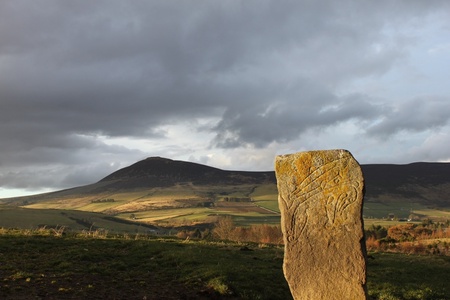Scotland's Picts have long been viewed as a mysterious people with their enigmatic symbols and inscriptions, accentuated by representations of them as wild barbarians with exotic origins.
But a newly published study by an international team led by researchers at the University of Aberdeen and Liverpool John Moores University is helping to shed new light on the origins of the Picts.
The Picts were first mentioned in the late 3rd century CE as resisting the Romans and went on to form a powerful kingdom that ruled over a large part of northern Britain, in present-day north-east Scotland.
In the medieval period, the Picts were considered immigrants from Thrace (north of the Aegean Sea), Scythia (eastern Europe), or isles north of Britain but as they left few written sources of their own little is known of their origins or relations with other cultural groups living in Britain.
Archaeologists have conducted the first extensive analysis of Pictish genomes and their results have been published today (27/04/2023) in the open access journal PLOS Genetics.
The results reveal a long-standing genetic continuity in some regions of the British Isles, helping to build a picture of where the Picts came from and providing new understanding of how present-day genetic diversity formed. The findings also confirm descriptions by the great English historian Bede of the far-flung eastern origins of the Picts as one of myth and fantasy.
The researchers used Identity-By-Descent (IBD) methods to compare two high-quality Pictish genomes sequenced from individuals excavated from Pictish-era cemeteries at Lundin Links in Fife (Southern Pictland) and Balintore in Easter Ross (Northern Pictland) to those of previously published ancient genomes as well as the modern population.
Dr Linus Girdland Flink of the University of Aberdeen, senior corresponding author of the study, said: “Among the peoples present during the first millennium CE in Britain, the Picts are one of the most enigmatic.
“Their unique cultural features such as Pictish symbols and the scarcity of contemporary literary and archaeological sources resulted in many diverse hypotheses about their origin, lifestyle and culture, part of the so-called ‘Pictish problem’.
“We aimed to determine the genetic relationships between the Picts and neighbouring modern-day and ancient populations.
“Using DNA analysis, we have been able to fill a gap in an understudied area of Scotland’s past.
“Our results show that individuals from western Scotland, Wales, Northern Ireland, and Northumbria display a higher degree of Identity-By-Descent (IBD) sharing with the Pictish genomes, meaning they are genetically most similar among modern populations.”
This genetic make-up was distinct from areas of southern England where there is a greater relative degree of Anglo-Saxon heritage.
Dr Adeline Morez from Liverpool John Moores University, lead corresponding author of the study, adds: “Our findings also support the idea of regional continuity between the Late Iron Age and early medieval periods and indicates that the Picts were local to the British Isles in their origin, as their gene pool is drawn from the older Iron Age, and not from large-scale migration, from exotic locations far to the east.
“However, by comparing the samples between southern and northern Pictland we can also see that they were not one homogenous group and that there are some distinct differences, which point to patterns of migration and life-time mobility that require further study.”
The analysis of mitochondrial genomes from Lundin Links has also provided an insight into another Pictish myth – that they practised a form of matriliny, with succession and perhaps inheritance going to the sister’s son rather than directly through the male line.
“In a matrilocal system we would expect to find females staying in their birthplace after their marriage and throughout their life.
“At Lundin Links, diversity in the maternally inherited mitochondrial DNA suggests this was not the case. This finding challenges the older hypotheses that Pictish succession was passed along the mother’s side and raise further questions about our understanding of Pictish society and its organisation.”


